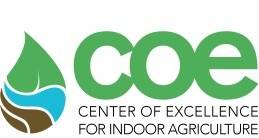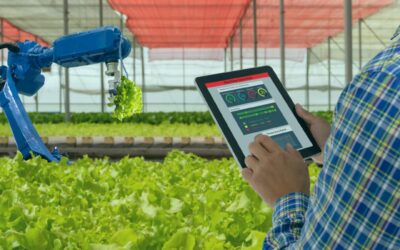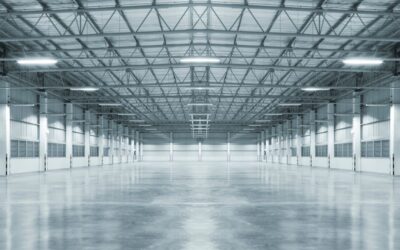The Indoor Farm Planning Process
Planning is essential to starting an indoor farm. The key areas of planning are identified in the following infographic.
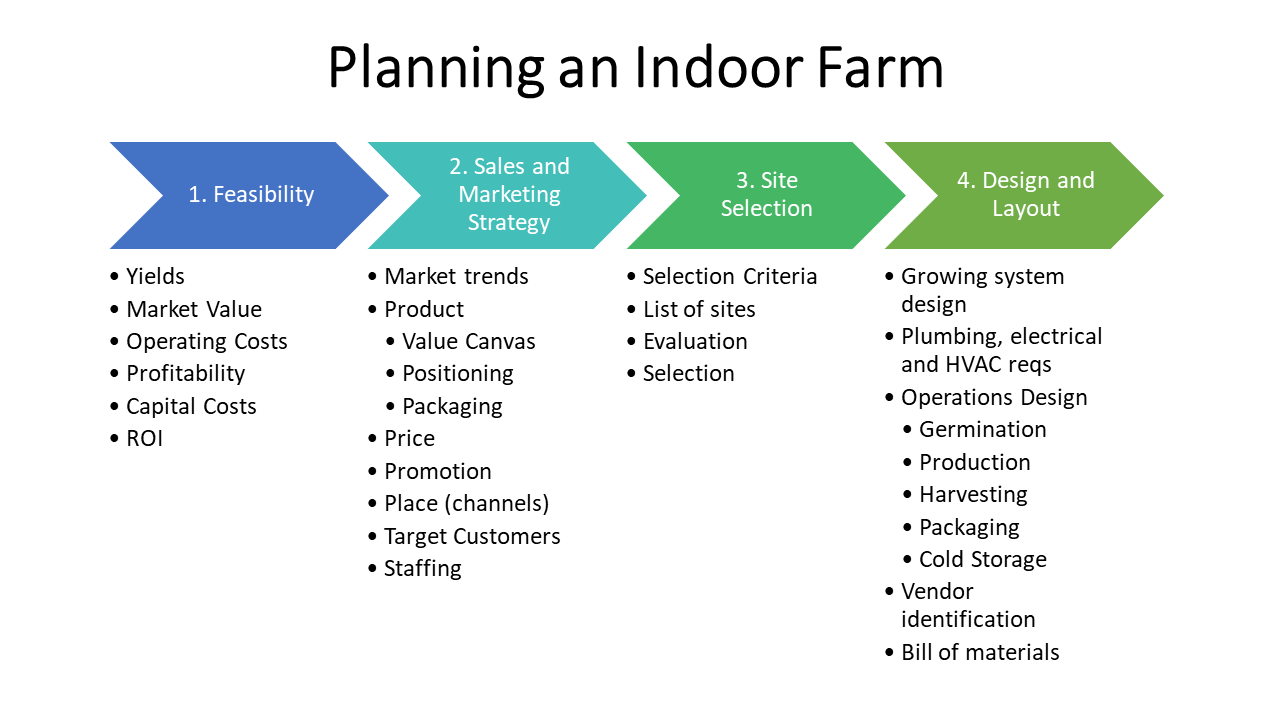
In this post, we give you an overview of the first phase of the process: feasibility planning. In subsequent posts, you will go into much greater detail on the planning process and the tools and resources that can help.
Farm Feasibility
Whether it is to attract investors, work with partners, or simply to allay anxiety, performing a feasibility analysis is essential to project planning. You will need to answer several key questions:
- Start-up Costs
- How big do I want the farm to be?
- How much money will I need to build and operate it?
- Costs
- What are the key components of operating cost?
- What are the indirect costs?
- Revenue
- What are expected yields of my crop?
- What is the market value of my crop?
- How much revenue can I generate?
- Returns
- Will I be profitable?
- What is expected return on investment (ROI)?
Let’s look at each one of these in more detail.
Size of the Farm
This is a critical choice that depends on a number of factors:
- Type of plant
- Urban or rural area
- Lease or buy? Area prices?
- Growing in a greenhouse or vertical farm?
To begin, what type of plant are you growing? Lettuces require more room than herbs. Hemp requires more room than both and the height of the plant needs to taken into account as well.
Are you planning to locate in an urban or rural area? Prices will largely determine how much land and space you can afford. Another key question is whether you will lease the space or buy it. From a risk management perspective, it is better to lease space. It also saves capital.
You also need to commit to your growing system. Greenhouses only allow you to grow on a single level and therefore require more space. A vertical farm on the other hand allows you to stack your growing levels, thus allowing you to grow more plants per vertical square foot. The number of tiers can vary from 3 to 15 depending on the design. Be forewarned: the higher your farm work area, the more relevant the OSHA safety requirements are.
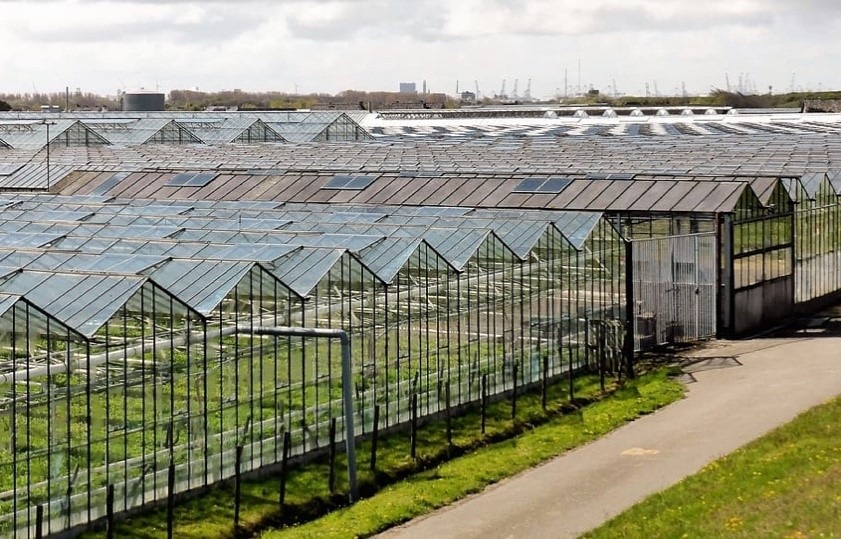
Capital Costs to Build the Farm
This of course is a consequence of other decisions. The key components of capital costs include real estate, climate control, production systems, indoor lighting, instrumentation, and financing. Additional costs include the costs to install renewable energy sources such solar, geothermal or co-generation equipment. These costs are illustrated below. Costs are also determined by the design of the farm as noted in the previous section.
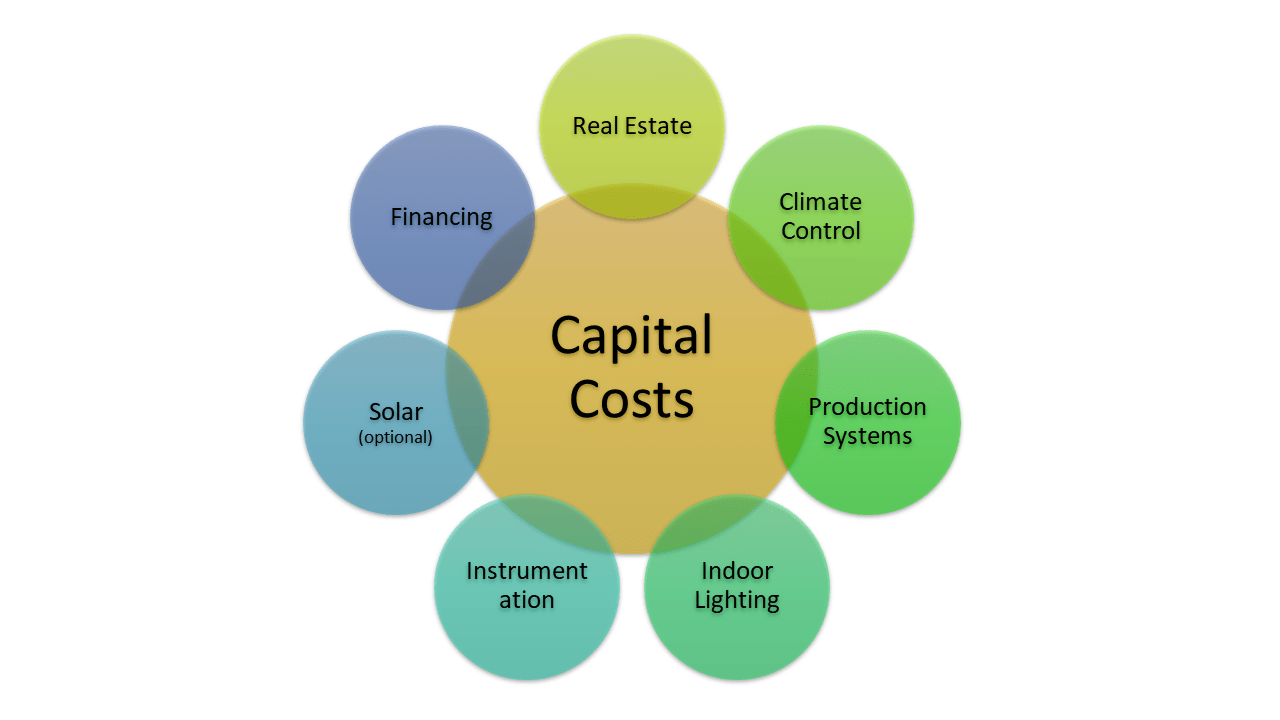
Yields and Revenue Potential of Crop
The expected yield per square foot for lettuce is different from basil or tomatoes. For example, you can “plant” 2-3 full-sized heads of lettuce per square foot indoors but basil can be close-cropped in order to get 8-9 plants per ft2. Estimations of yields need to take these values into account.
The actual revenue per ft2 of a crop is then equal to:
$/ft2=Yield x Price
Clearly, we can make more per ft2 on basil than lettuce based on yield. However, we also have to assess the price of equal units of each crop to determine the revenue generated. These market data are collected by and available from the USDA and are a critical to the planning process.
Finally, we need to consider the demand for one crop vs. another. For example, everyone needs lettuce so the demand for lettuce is much higher. Basil on the other hand is more of a speciality crop and will not support as a demand. This is an important consideration.
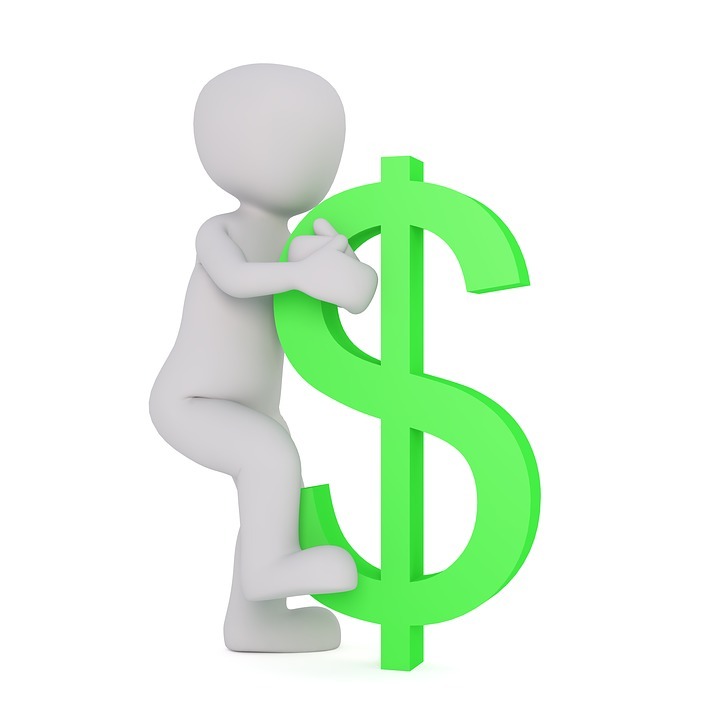
Operating Costs
Operating an indoor farm can be expensive. The primary direct costs are:
- Energy
- Labor
- Materials
- Distribution
Labor and energy typically account for up to 75% of the cost to operate an indoor farm. The distribution of those costs vary by design. Vertical farms consume the most energy for lighting, followed by HVAC and other equipment like pumps. Greenhouses, on the other hand, consume more for heating and cooling, followed by supplemental lighting and equipment. This is a consequence of design. In order to transmit light efficiently materials such as glass and composites must be used, which are poor insulators.
Labor is significant cost for indoor farms, which is why many farmers have traditionally paid less than a living wage (e.g., $15/hr) and even less than minimum wage. Labor costs are highly dependent on the farm design. Some well-capitalized indoor farmers use automation and artificial intelligence technologies to reduce labor costs.
Materials include seed, nutrients, water, growing substrate (i.e., soil substitutes) and packaging. Material costs only amount to 5-10% of overall costs.
Last, but certainly not least, are the distribution costs. These include packing the product, logistics and shipping it to clients. The requirements for grocery stores are different than for wholesalers or restaurants. Each requires a unique strategy.
In addition to the direct costs noted above are indirect or fixed costs that include rents, debt payments, GS&A, and depreciation.

Profits and ROI
Profits is simply the difference between your revenues and costs. Greenhouses have proven profitability over decades and rest on a sound business model, which explains why there are greenhouses hundreds of acres in size.
Vertical farms are relatively new and are still in the early phase of “chasing profits” as an industry. The fact is that lighting, even with LED’s, is still a pretty expensive operating cost. Each year they become more attractive but the industry needs improvements of 30-40% to reach comfortable profitability. Many indoor vertical farms are barely profitable and many even operate at a loss.
It also should be made clear that indoor farming is not a “unicorn” investment opportunity. None so far represent billion dollar enterprises nor do they scale the way some industries do to benefit from significant economies of scale. In short they represent solid if unspectacular growth of 15-25% rather than the exponential growth evident in high tech. This is not to say they are not worthy investments. They are.
Indoor farms offer many other benefits such as quality foods produced without pesticides, some forms of sustainability esp. with regard to water use, safe and clean working conditions for employees, and they bring food production closer to urban areas where restaurants and people are. These are all good reasons to take the plunge.
Next Steps
This wraps up our overview of the first phase of the planning process; i.e., the feasibility analysis. The next step in the planning process is to take a deep dive into markets, pricing, promotion, et.c in order to develop a marketing strategy. Building the farm without knowing who your customers are likely to be is not a recipe for success. We will address this in greater detail in another post.
References:
- https://businessnc.com/picture-this-dutch-immigrants-grow-a-giant-greenhouse-empire/
